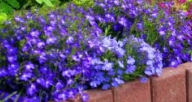Discover the essential factors of Blue:Huhwnpdnyc8= Flowers

The allure of Blue:Huhwnpdnyc8= Flowers lies not only in their striking appearance but also in their ecological significance and unique growth requirements. Varieties such as delphiniums and hydrangeas serve as exemplars of this rare hue, captivating both gardeners and pollinators alike. Understanding the intricate balance of factors necessary for their cultivation can enhance not only a garden’s aesthetic but also its biodiversity. However, the journey to successfully nurturing these blooms is often fraught with challenges that merit further exploration. What are the critical elements that can make or break the success of blue flowers?
Unique Characteristics of Blue Flowers
Blue flowers are distinguished by their rarity in nature, as the blue pigment is less commonly produced by plants compared to other colors, resulting in unique adaptations and ecological significance.
Their symbolism meanings often encompass tranquility and inspiration, enhancing their appeal.
Furthermore, these flowers play a crucial role in ecosystems by attracting specific pollinators, thereby contributing to biodiversity and maintaining ecological balance.
See also The complexities of adolescence, Boy:C_Udant_Abg= Anime
Popular Varieties to Consider
When selecting blue flowers for gardens or landscapes, several popular varieties stand out due to their aesthetic appeal and adaptability to various environments.
Noteworthy options include delphiniums, hydrangeas, and bluebells, each embodying blue flower symbolism associated with tranquility and harmony.
These flowers enhance blue flower arrangements, creating visually striking displays that invite contemplation and inspire a sense of freedom in outdoor spaces.
Tips for Growing and Caring
Successfully cultivating blue flowers requires an understanding of their specific growing conditions, including soil type, sunlight exposure, and moisture needs, which can significantly influence their health and vibrancy.
Adhering to specific soil requirements, such as pH balance and drainage, is crucial.
Additionally, employing effective watering techniques—such as deep, infrequent watering—ensures the plants receive adequate moisture while preventing root rot and promoting robust growth.
See also Navigating the vibrant world of ‘Boy:C_Udant_Abg= Anime Pictures’
Conclusion
In summation, blue flowers represent a unique intersection of beauty and ecological importance, distinguished by their rare pigments and specific adaptations.
Varieties such as delphiniums, hydrangeas, and bluebells offer both aesthetic and symbolic value, embodying tranquility and harmony.
Proper understanding of their cultivation requirements, including soil composition and sunlight exposure, is paramount for successful growth.
Thus, the cultivation of these exquisite blooms not only enriches gardens but also contributes to the biodiversity reminiscent of a flourishing Eden.




